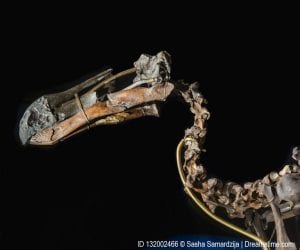This is post 4 of 4 in a series showcasing how Population Education lesson plans can be used to meet the Next Generation Science Standards. This post will feature one high school lesson plan targeted at meeting a specific NGSS standard. You can read about how Population Education relates to NGSS on the series’ intro post.
NGS Standard: Design, evaluate, and refine a solution for reducing the impacts of human activities on the environment and biodiversity (HS-LS2-7).
Showcase Lesson: Bye, Bye Birdie
PopEd Curriculum: Earth Matters, Biodiversity (Earth Matters Unit)
Grade Level: High School
Subjects: biology, environmental science, language arts, civics
Lesson Objectives: In this lesson students will be able to:
- Develop criteria that ecologists, wildlife managers, and public officials might use to make decisions about protecting endangered species.
- Conduct research on an endangered species through the Internet and other sources.
- Present their findings, showing how their species measures up against the chosen decision criteria.
Many human activities have adverse effects on the environment. Human induced climate change, deforestation, land use conversion, and pollution are causing a great loss in species biodiversity across the planet. Scientists estimate that as much as 20 percent of all species could go extinct by the year 2020, and some argue humans are the primary driver behind a sixth mass extinction. High species biodiversity provides many valuable ecosystem services that keep our planet in equilibrium. With the rate of wildlife endangerment increasing, difficult decisions are required in order to prioritize efforts to save endangered species. In Bye, Bye Birdie students determine which factors should be considered in species conservation and conduct research on an endangered species to justify it preservation.
Note: This lesson is targeted to meet NGS Standard HS-LS2-7 –however– it is most closely aligned to its supporting Disciplinary Core Idea LS4.D (by grade 12), which examines the ways in which humans adversely impact biodiversity. This activity should be used to supplement a series of lessons aimed at meeting standard HS-LS2-7.
NGSS Extension Activities
Have students continue research on their endangered species by evaluating the effectiveness of current conservation efforts and challenge students to brainstorm another conservation tactic not currently in place. Have students write a “state of the species” report outlining their findings and proposed solution.
Read about the sixth mass extinction. Coming soon, we’ll have a complete student reading available for download. Discuss the driving forces behind the sixth mass extinction and what changes humans can make to prevent it.
Challenge your students to apply their knowledge of human impacts on biodiversity by submitting entries to our World of 7 Billion Student Video Contest. One prompt has students connect population growth to the sixth mass extinction and devise a sustainable solution to the problem. Click here for more information about our student video contest.
NGSS Lesson Plan Showcase:
Intro: How to Meet the Next Generation Science Standards with Population Education
K-5: NGSS Lesson Plan for Elementary Grades – Water, Water Everywhere
6-8: NGSS Lesson Plan for Middle School – How Much Space Do We Need?



